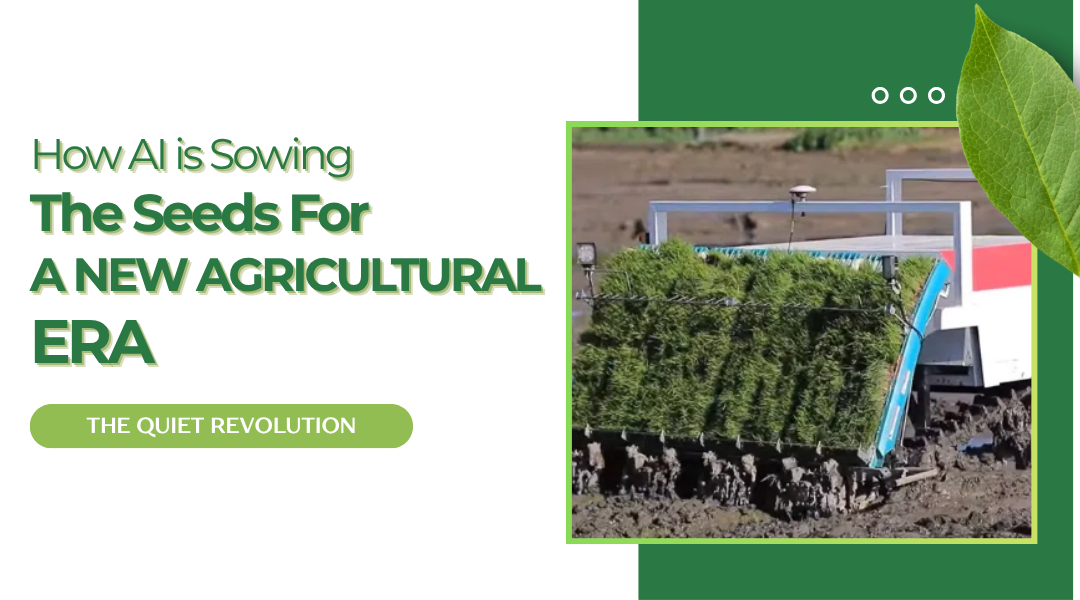For centuries, farming has been a testament to human intuition and a relentless battle against the elements. Today, a new partner is entering the fields: artificial intelligence. But this isn’t a story of robots replacing farmers. It’s a story of augmentation, where data becomes a new kind of crop and algorithms act as a digital sixth sense, empowering those who feed the world to work with unprecedented precision and foresight.
The Harvested Data: Lessons from the Front Lines
The real proof of this transformation isn’t in lab reports, but in the dirt. By looking at how AI is being applied from the corporate farm to the community garden, we can distill the core principles of this new age.
1. The Macro Lesson: From Blanket Solutions to Surgical Strikes
Large-scale agribusiness has shifted from managing entire fields to caring for individual plants. The partnership between equipment giants and data firms has yielded platforms that act as a “central nervous system” for thousands of acres. For example, a system like “TerraNexus” doesn’t just provide a soil map; it integrates satellite imagery with real-time sensor data to create a dynamic prescription. It can identify a 50-square-foot patch of a 5,000-acre cornfield that is under nitrogen stress and automatically direct a sprayer to apply fertilizer only to that specific area. The lesson here is hyper-efficiency: doing more with less, minimizing waste, and maximizing the return on every seed, drop of water, and ounce of fertilizer.
2. The Micro Lesson: Empowering the Smallest Farms
The revolution is equally potent on a smaller scale. In Southeast Asia, an app called “RiSE” (Rice Intelligence and Support Ecosystem) demonstrates how AI can leapfrog traditional barriers. Smallholder rice farmers use their phones to photograph their fields. The app, backed by AI, doesn’t just diagnose disease; it predicts yield based on tiller count and plant health, and then connects farmers directly to bulk-buying cooperatives, giving them negotiating power they never had before. The lesson is democratization: AI can be a powerful tool for leveling the playing field, providing smallholders with the kind of market and agronomic intelligence that was once the exclusive domain of large corporations.
3. The Vertical Lesson: Re-engineering Nature’s Logic
In urban vertical farms, AI’s role is to become a master climate architect. A company like “Edenseed” uses AI not just to control light and water, but to manipulate flavor. By analyzing how subtle changes in light spectra and nutrient timing affect the production of essential oils and sugars, their algorithms can “program” a basil plant to be more pungent or a strawberry to be sweeter, tailoring produce for the premium restaurant market. The lesson is control: AI allows us to deconstruct and optimize the variables of plant growth in a closed loop, creating consistent, high-value food in the heart of our cities.
4. The Collective Lesson: The Power of Shared Intelligence
Perhaps the most profound lesson is that AI thrives on collective data. The “Global Soil Health Initiative” is an open-source project where farmers from Brazil to Botswana contribute anonymized soil data. The AI analyzes this global dataset to uncover patterns no single research institution could see, such as how a specific cover crop in one part of the world can improve water retention in a completely different soil type on another continent. The lesson is collaboration: when we share data, we don’t lose competitive advantage; we gain a deeper, universal understanding of the land.
The Human Element: The Irreplaceable Partner
Amidst this technological surge, one lesson stands above all: AI is a tool, not a master. Its algorithms are trained on the past, but farming is about navigating the present and future. A system might recommend harvesting based on color and size, but only a farmer can smell the rain in the air and know that waiting one more day risks a devastating fungal rot. The farmer’s intuition, their “feel” for the land, and their generations of inherited knowledge are the essential context that gives AI its purpose. The most successful operations will be those that foster a symbiotic relationship between human wisdom and machine intelligence.
Conclusion: Cultivating a Resilient Future
The rise of AI in agriculture marks a fundamental shift from a profession of reaction to one of prediction and precision. It is equipping us to meet the grand challenges of our time: feeding a growing population while using fewer resources and regenerating our environment.
This is not a cold, automated future. It is a more informed and resilient one. By harnessing AI to handle the immense complexity of data, we free up the farmer to do what they have always done best: to nurture, to manage, and to make the final, crucial decisions that sustain us all. The future of farming is not about replacing the farmer, but about arming them with the deepest understanding of their land in history. The seeds of this smarter future have been planted, and they are already beginning to sprout.
